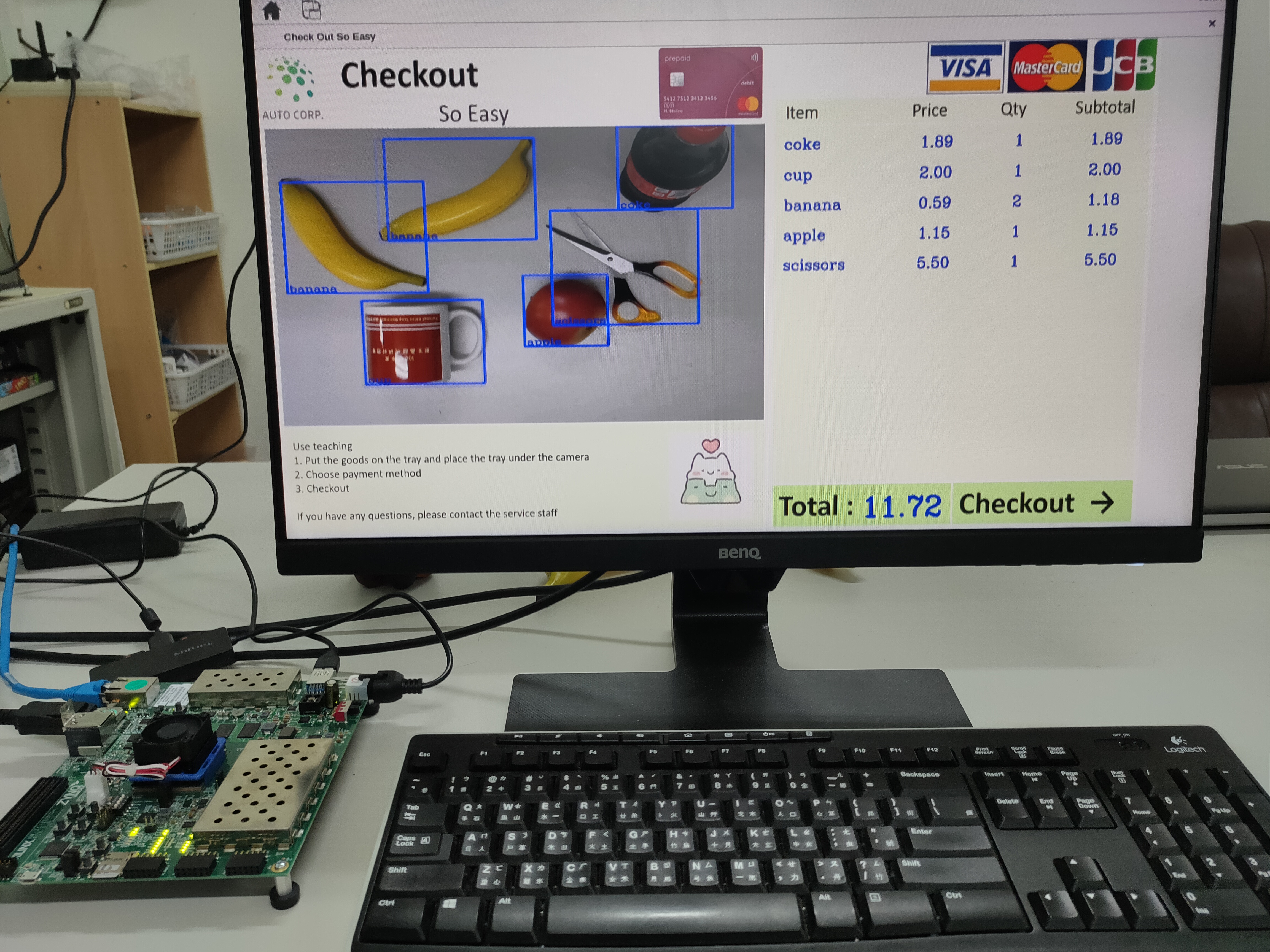If you use the sd_card.img in prebuilt/, you can skip these steps. (5.)
1. Clone the full repository (including submodules)
$ git clone --recurse-submodules $ git clone --recurse-submodules https://github.com/Xilinx/Vitis-In-Depth-Tutorial
$ cd Vitis-In-Depth-Tutorial/Runtime_and_System_Optimization/Design_Tutorials/02-ivas-ml/
Note: Vitis Patch Required: This design has a large rootfs, and Vitis 2020.1 has an issue packaging SD card images with ext4 partitions over 2GB. This patch changes the packaging flow to round up the initial rootfs size to the first full multiple of 512MB over the ext4 partition size. To install it:
$ cp ./vitis_patch/mkfsImage.sh ${XILINX_VITIS}/scripts/vitis/util
2. Source Vitis2020.1, PetaLinux2020.1 and XRT2020.1
$ source ${XILINX_VITIS}/settings64.sh
$ source ${XILINX_PetaLinux}/settings.sh
$ source ${XILINX_XRT}/setup.sh
3. Build the hardware platform
$ cd platform/dev/zcu104_vcu
$ make
- It's possible that errors occur when
petalinux-config kernel,petalinux-build,petalinux-build --sdk. You should properly modifyMakefileinplatform/dev/zcu104_vcuandplatform/dev/zcu104_vcu/petalinuxto re do the command which got errors(makeagain inplatform/dev/zcu104_vcu)
4. Build the Vitis design(Adding the DPU ip)
One time, and one time only, you must apply the patch in the hw_src directory against the Vitis Vision library.
$ cd ../../../hw_src/Vitis_Libraries
$ patch -p1 < ../vision_lib_area_resize_ii_fix.patch
$ cd ..
$ cp ../../../../../dpu_conf_zcu104.vh .
$ cp ../../../../../zcu10x_config .
$ make
5. Get the SD card image
After above steps, you will get sd_card.img in sd_card_zcu104/.
Or, you can download the prebuilt sd_card.img. (See SD card image)
-
All of following steps in this section are on the target(ZCU104 board)
-
The following files and directories should be put into
/home/root/:jsons/scripts/test_data/.bashrcdebug.ini
-
The following file should be put into
/:update.tar.gz
1. Resize rootfs
cd /home/root/scripts
sh ext4_auto_resize.sh
2. Install the dependencies and Vitis AI library v1.2
The following steps needs the board to have a path to the internet(script uses wget to download)
cd /home/root/scripts
sh update.sh
sh install_vai.sh
The compiled file ssd_mobilenet_v2_coco_tf.elf is already in demo/, you can skip this step and directly use the provided file
1. Build Vitis-AI environment
Follow the steps on Vitis-AI to build docker.
./docker_run.sh xilinx/vitis-ai-gpu:latest
**2. Download tensorflow models from Xilinx AI model zoo **
To download .pb file only, run sh download_deploy_model.sh and you can skip the following instructions in this step
You can get models by following the instructions on Xilinx/Vitis-AI/AI-Model-Zoo
In our project , we use xilinx_model_sample/tf_ssdmobilenetv2_coco_300_300_3.75G as our object detection model.
Copy xilinx_model_sample/tf_ssdmobilenetv2_coco_300_300_3.75G/quantized/deploy_model.pb to host/ssd_mobilenet.
3. Compile the tensorflow model
After excuting./ssdmobilenet_compile_b4096.sh,you will get dpu_ssd_mobilenet_v2_coco_tf.elf
The compiled file tfssdtest.so is already in /demo, you can skip this step and directly use the provided file
1. Setting Up the Host
Follow the steps on Xilinx/Vitis-AI-Library
2. Cross-compile
run ./build_final.sh , you will get a compiled file tfssdtest.so with ELF 64-bit LSB shared object, ARM aarch64 format.
Copy the compiled file to /DEMO for the next step .
-
Following steps are on the target(ZCU104):
If all settings are done, put the directory
demointo/home/root/.
1. Revise the display resolution
sh set_monitor.sh
2. Excute the Self-checkout-system demo
- You need to use the
sd_card.imgin vcu_decode/python3 DEMO.py -c Truepython3 DEMO.py -v <mp4 video file>
Xilinx Vitis-AI quantizer & compiler / Xilinx Vitis-Ai-Library : Xilinx/Vitis-AI
Xilinx Vitis Tutorial : Xilinx/Vitis-In-Depth-Tutorial
